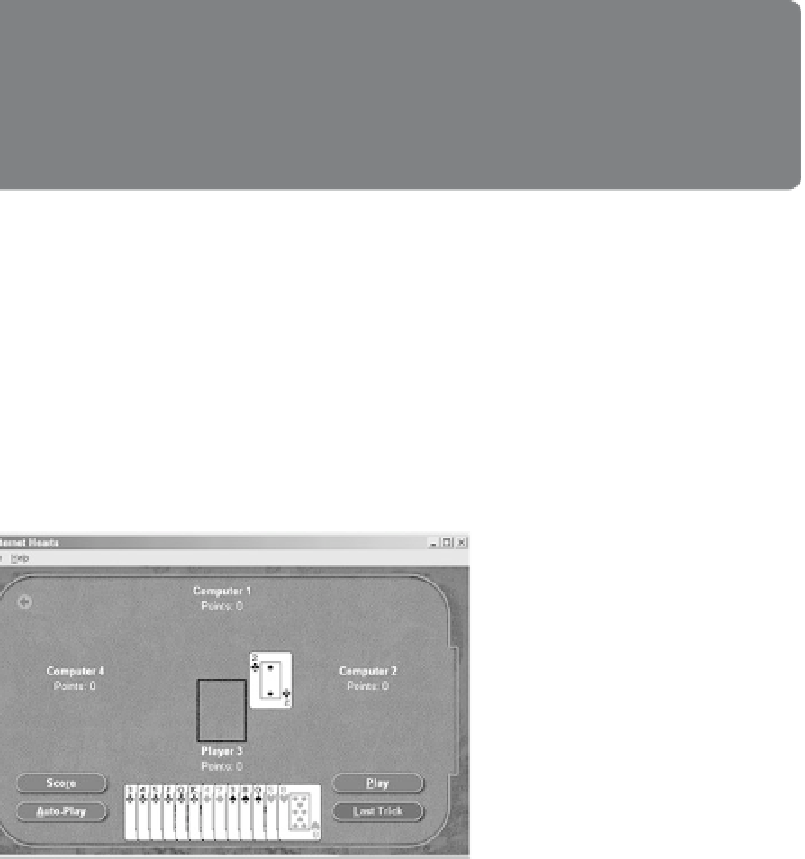Game Development Reference
In-Depth Information
Players normally get all the time they need to solve puzzles. Because different peo-
ple bring differing amounts of brainpower to the task, requiring players to solve a
puzzle within a time limit might make the game impossible for some. Exceptions to
this rule can sometimes succeed;
ChuChu Rocket!
offers both a time-limited multi-
player mode and an untimed mode.
A few games do not make the correct solution clear at the outset of the puzzle. The
player not only has to understand how the puzzle works but she also has to guess at
the solution she must try to achieve. This is bad game design: It forces the player to
solve the puzzle by trial and error alone because there's no way to tell when she's
on the right track. In order to open the stone sarcophagus at the end of
Infidel
, the
player had to find the one correct combination of objects out of 24 possible combi-
nations. The game gave no hints about which combination opened the box; the
player simply had to try them all.
DESIGN RULE
Avoid Trial-and-Error Solutions
Solving most logic puzzles requires a certain amount of experimentation, but the player
must be able to make deductions from his experiments. Do not make puzzles that can
only
be solved by trial and error.
MATHEMATICAL CHALLENGES
Games don't usually test the player's mathematical abilities explicitly but often do
require the player to reason about probabilities. Many games include an element of
chance or require the player to make educated guesses about situations of which he
has only an imperfect knowledge. Consider
Microsoft Hearts
(see
Figure 9.4
) as an
example of a game giving imperfect information. Initially, the player does not
know what cards the other players hold, but a skilled player can work out to a rea-
sonable degree of certainty what those cards must be by using the information
revealed as cards are passed and played during the game.
FIGURE 9.4
Microsoft Hearts



